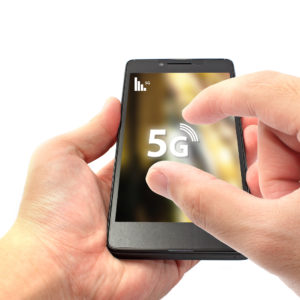More tribes are signing on to a lawsuit challenging a Federal Communications Commission rule change intended to expedite the installation of 5G technology. In March, the FCC voted to streamline federal environmental and historic review procedures by removing permitting requirements for certain small 5G installations. Previously, telecommunications companies needed to consult local Native American tribes and obtain reviews and permits from them before construction. The FCC argued that, since the 5G installations are much smaller than a traditional cell tower, the permitting requirements were overly burdensome, adding tens of millions of dollars to the cost of bringing 5G service to the nation. If America is to lead the world in 5G development and deployment, the requirements for permits must be amended, the FCC argued. However, the rule change remains unpopular with Native American tribes, who are continuing to sign on to lawsuits against the FCC.
This week, several tribes, including the Cheyenne, Arapaho and Apache, filed unopposed motions to intervene in a D.C. Circuit Court challenge to the FCC’s rule. Nine tribes, as well as the Natural Resources Defense Council, filed suit to stop the rule from taking effect. Meanwhile, the Crow Creek tribe has also filed suit in South Dakota District Court, also seeking to stop the rule. The cases were later consolidated.
“The determination that plaintiff Indian tribe as class representative cannot review wireless small cell deployment, nor charge ‘upfront review fees’ or any ‘fees’ regarding Section 106 of wireless infrastructure deployments or other deployments, constitutes a change of policy by the federal defendants, as the federal defendants have allowed upfront review fees charged by the plaintiff Indian tribe and other Indian tribes for the last 12 to 14 years without objection,” their complaint states.
After the change, companies would no longer need to acquire permits from tribes before beginning construction.
It may be difficult to find room for a compromise, though. Tribes and telecommunications companies frequently disagree about the cultural history of particular areas. In one striking example, the Seminole Tribe’s historic preservation office was not alerted about a plan to install 22 small cell light towers at the Hard Rock Stadium, home of the Miami Dolphins. Deregulation proponents say that this was an example of a situation where additional surveying and permits were unnecessary because the cell equipment was going to be installed on a pre-existing structure.
However, the Seminole tribe says that the area was used as a burial ground both by the Tequesta Indians around 800 A.D. and the Seminole tribe in the mid-19th century. After the rule change, the tribe is not likely to be informed at all of planned projects.
“Rather, the [Tribal Historic Preservation Officer] is likely to be alerted to new small cell sites only after irreparable damage is caused by disturbances associated with construction,” the tribe said.
In a petition filed in June, the Seminole Tribe argued that it had “unique and often exclusive” knowledge about its historic properties and what was needed to protect them. The petition they filed argues that, to preserve cultural and religious heritage sites, the tribe’s historic preservation office needs to be consulted before projects and any fees collected are used to fund the operation of this office.
“The Tribe’s cultural and religious activities and traditions depend on its ancestral lands, and its historic properties and cultural resources are located both on and off the reservation. Central to the Tribe’s protection of its historic properties and cultural resources has been its ability to guard sensitive information from outsiders,” the lawsuit reads.
Since the announcement, tribes across the country have been voicing their disapproval.
The issue has exposed an underlying tension which exists between different reservation needs and desires. Although there is a responsibility to preserve cultural sites, tribes have also spoken about the need to help connect reservations to the internet. Currently, reservations are some of the least-connected areas of the country. 5G advocates say that the technology can bring the benefits of the internet to small communities in remote areas, including reservations. To do so, they would need to acquire permits, however. In recent years more and more tribes have been demanding consultation before construction can take place and the costs of these consultations both in money and time are increasing.
What should replace the FCC’s rule if it were to be overturned is unclear. Native Americans who support the present lawsuits also acknowledge that the previous system was prone to abuse.
“The [Tribal Historic Preservation Officers] including Standing Rock’s [Tribal Historic Preservation Officer] responds to a FCC letter and charges for the response. Some responses he billed $2,750. This is a regulatory function that will be taken away because it’s being used as a cash cow to mis-guided [Tribal Historic Preservation Officers] who think, ‘everybody else is doing it,’” writes Tim Mentz Sr., who served as the first historic preservation officer for the Standing Rock Sioux tribe.
Tribal Historic Preservation Officers are officially designated by a tribe to direct a program that has been approved by the National Park Service. Before assuming the functions of a Tribal Historic Preservation Officer, a tribe must submit a formal plan, explaining the cultural sites, traditions, or other elements of their traditional culture that they wish to protect. Over time, though, these officers have come to lose track of their proper preservation role, Mentz says, and instead are abusing permit fees for additional cash. He notes that the FCC’s decision was “inevitable” since tribal committees were not working through applications in a timely fashion.
According to the FCC’s estimates, the regulatory changes to environmental and historic review could reduce the regulatory costs of deployment by 80 percent and cut the time needed to deploy in half. All of these changes are expected to have a positive effect on America’s position as a global leader in 5G innovation.

